Beaver is a lovely community located on the Ohio River bluffs nearly directly across the river from the Shell petrochemical plant. Beaver boasts a large National Register of Historic Places historic district (PA-SHARE Resource #1994RE00048) that consists of large, stately homes, vernacular residences, a thriving central business district bursting with historic character and a series of open spaces and parks that date to the community’s late 18th century plan. Beaver is home to the National Historic Landmark Matthew S. Quay House (PA-SHARE Resource #1975RE00155) and the site of Ft. McIntosh, a late 18th century American frontier fort, which is individually listed in the National Register (PA-SHARE Resource #1975RE00024).
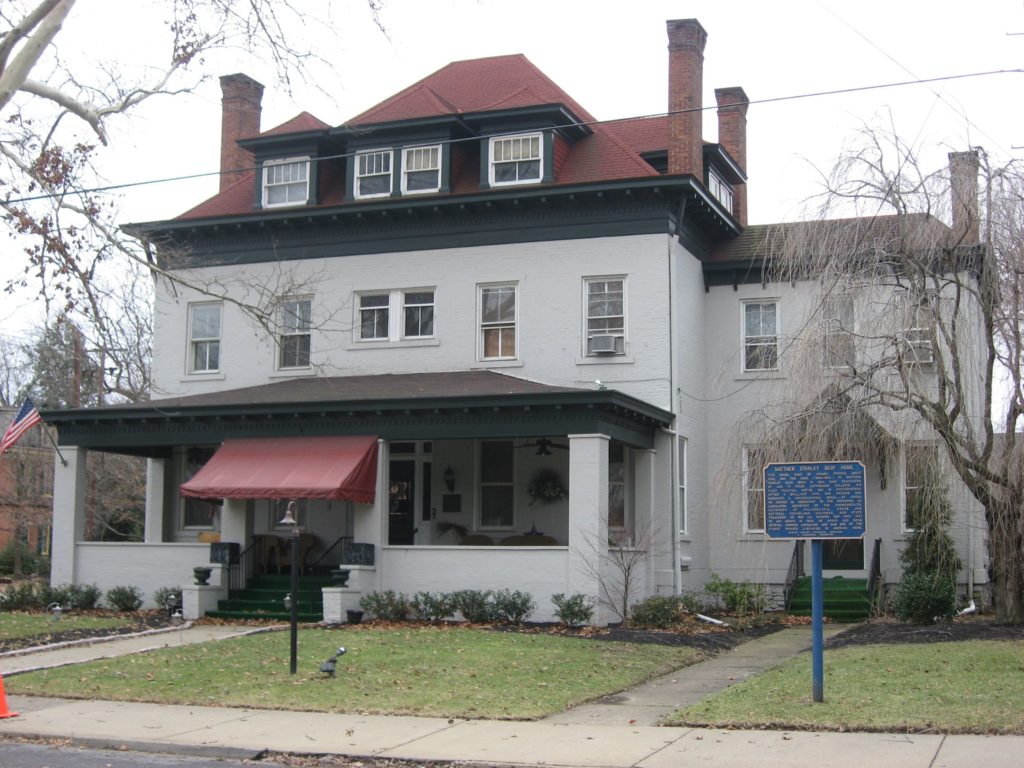
Beaver Borough also administers a local historic district ordinance pursuant to the Historic District Act (Act 167 of 1961) that requires a certificate of appropriateness for demolitions within the boundaries of the local historic district, which are coterminous with the National Register historic district.
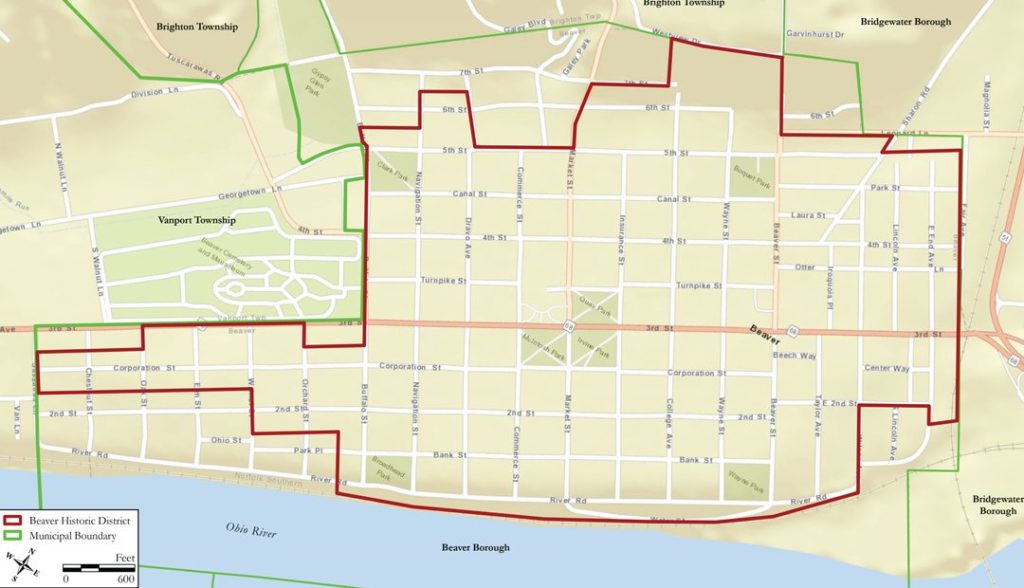
Section 106 at Work
As detailed in this space in September 2020, construction of a petrochemical plant along the Ohio River in Beaver County triggered consultation pursuant to Section 106 of the National Historic Preservation Act. Consultation was initiated due to Shell Chemical Appalachia’s (Shell) need for a permit from the United States Army Corps of Engineers.
At the conclusion of consultation, a Programmatic Agreement was implemented that stipulated several measures meant to mitigate effects of the plant’s construction on historic properties. Among those mitigation measures was that funding be provided to develop an historic preservation plan for Beaver Borough.
Over the years, the people of Beaver Borough have done excellent work maintaining the historic character of their community. But with the completion of the Shell plant on the horizon and expected spin-off new development and construction, the Borough and citizens felt it prudent to develop specific principles and goals to help guide this activity in a manner sensitive to the community’s important historic character.
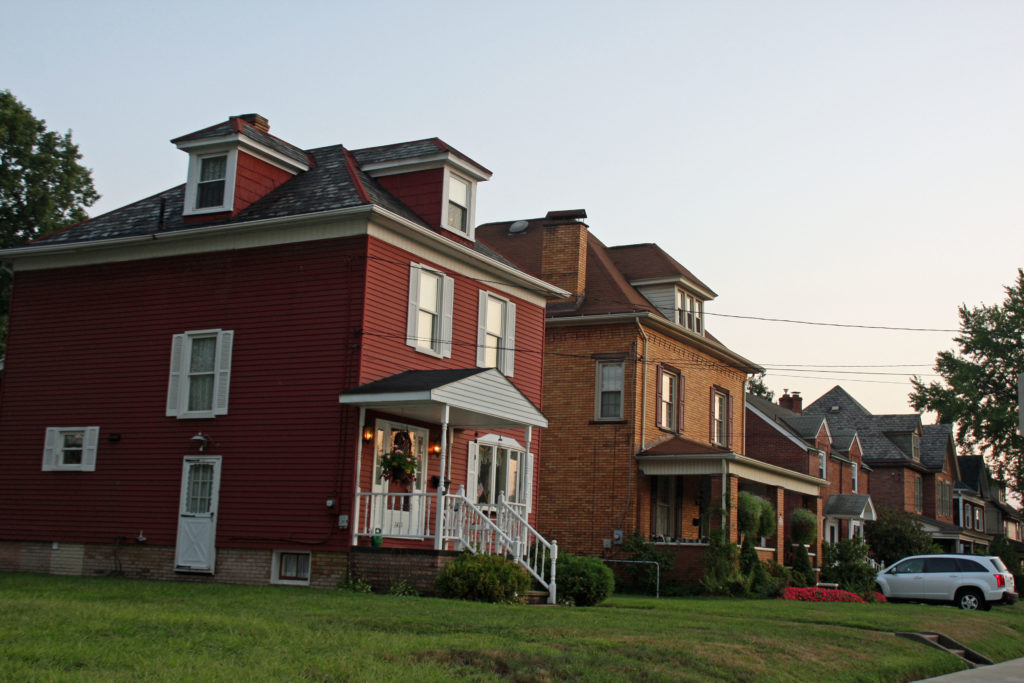
Homes near the intersection of Corporation and Elm Streets, Beaver Borough. Photo by Clio Consulting, 2019. 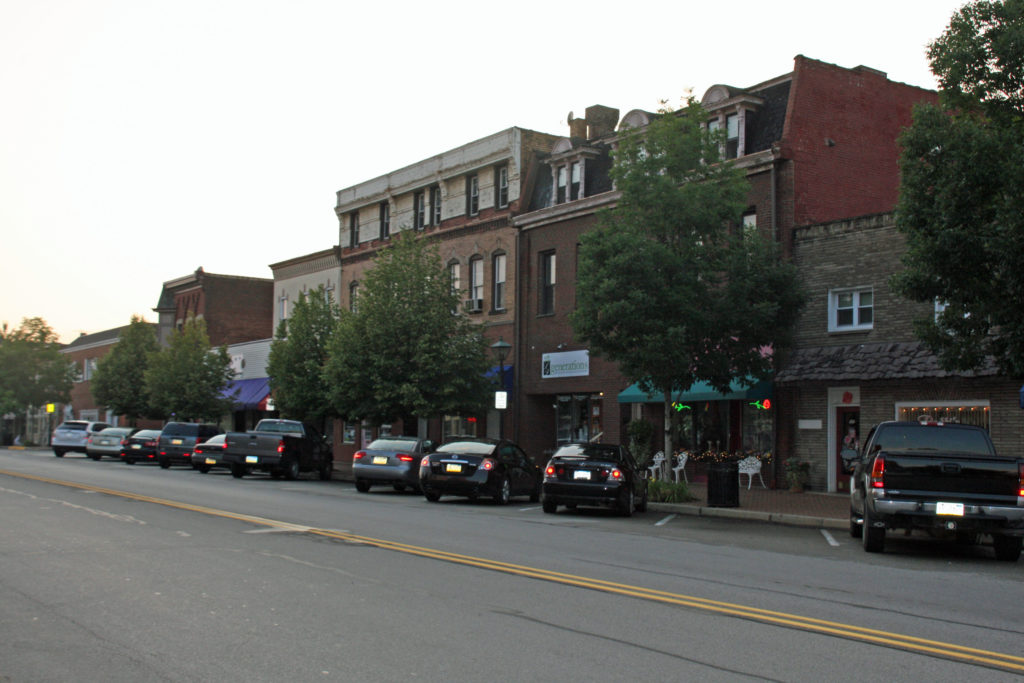
Businesses near 3rd and Wayne Streets, Beaver Borough. Photo by Clio Consulting, 2019.
With funding provided by the Shell mitigation and guided by citizen volunteers, PA SHPO undertook a process to create a Historic Preservation Plan and Design Guidelines for Beaver Borough. The Design Guidelines, which follow the PA SHPO’s Principles and Standards for Design Guidelines, were completed in 2019.
Preservation Planning
Assisting in the development of preservation plans for a community is one of the more important tasks the PA SHPO seeks to undertake. Every community is unique, and every community’s historic resources are unique. In communities with large numbers of older and historic buildings–which defines most places in western Pennsylvania– thoughtful planning is necessary to maintain a sense of place in those places we think of as “home.”
But the need for preservation planning goes beyond our shared desire to live in authentic, unique and historic places. In communities with substantial historic “infrastructure” consisting of historic buildings and landscapes, preservation planning becomes an economic and community development imperative.
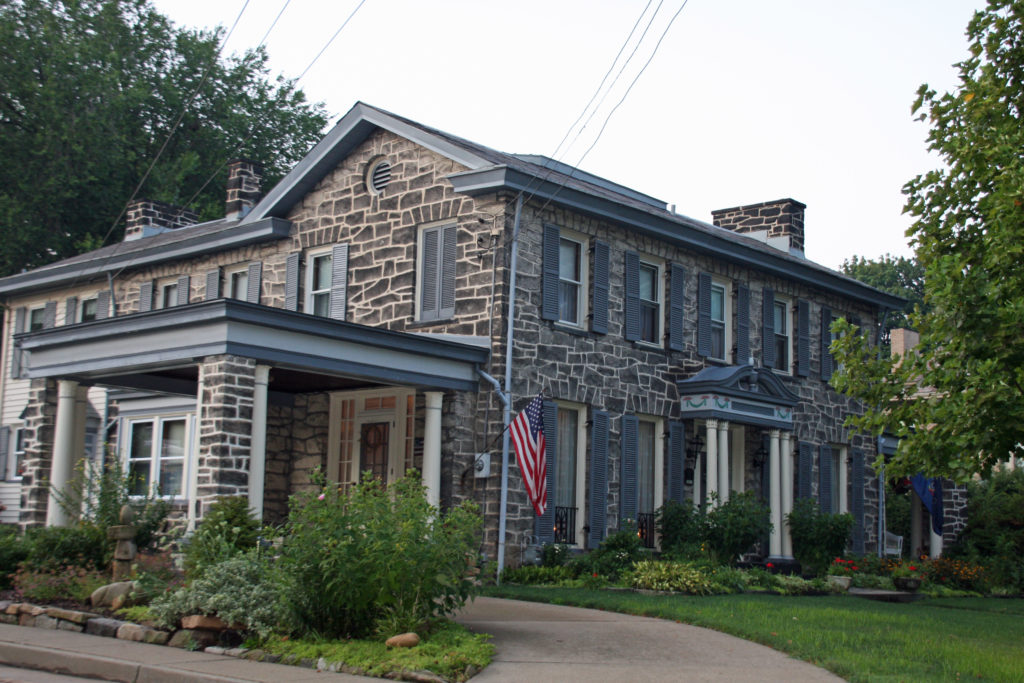
Allowing unplanned and often insensitive changes over time is to miss out on economic opportunities our historic buildings provide. A clear, implementable preservation plan is also the best way to guide elected officials, municipal staff, and preservation partners when seeking funding for preservation and preservation-adjacent activities. A community that can point to specific policies, vetted by the public and implemented by the municipality can be more competitive when seeking funding from a variety of sources.
The finished product of preservation planning work is important, to be sure. A clear and implementable plan for preservation is the obvious goal for this kind of work. But nearly as important–in many ways even more important–is the process undertaken to develop the plan. For a plan to be successful, a robust public engagement strategy that includes residents, businesses, regional partners and local elected officials is critical for two significant reasons.
First, a robust public engagement strategy will help develop a preservation plan that reflects the public’s interest in preservation and therefore aids in the implementation of the plan when complete. No plan is implementable if the public and elected officials have little or no role in its development.
Second, the process of engaging the public provides an opportunity to educate a broad audience as to the benefits of implementing a preservation ethic in their community. It is important to let people know what preservation is and, often, just as important to let people know what preservation is not.
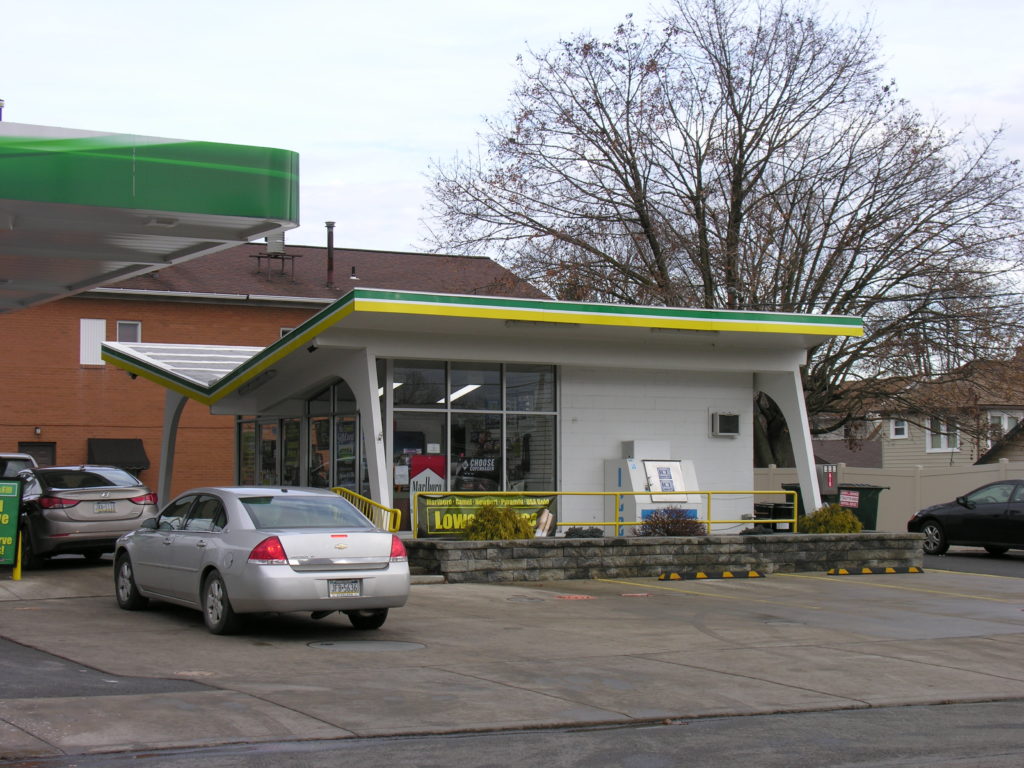
Preservation Planning in Beaver
Over a two-year period, the Beaver Historic Preservation Plan steering committee, led by Beaver’s Historic Architectural Review Board, guided the process to complete the Borough’s first historic preservation plan. Consisting of a group of dedicated and hard-working volunteers and elected officials and with the assistance of PA SHPO staff, the steering committee guided a professional consultant through a series of public meetings, on-line and on paper surveys and individual interviews.
The Beaver Historic Preservation Plan Steering Committee did outstanding work engaging the public and ensuring Borough elected officials and staff were able to participate in the often-lively discussions about what goals and implementation strategies the preservation plan would articulate. In what was a sometimes arduous process punctuated by a global pandemic and (hopefully) once-in-a-lifetime economic challenges, the steering committee persevered and developed what in many ways is a model preservation plan.
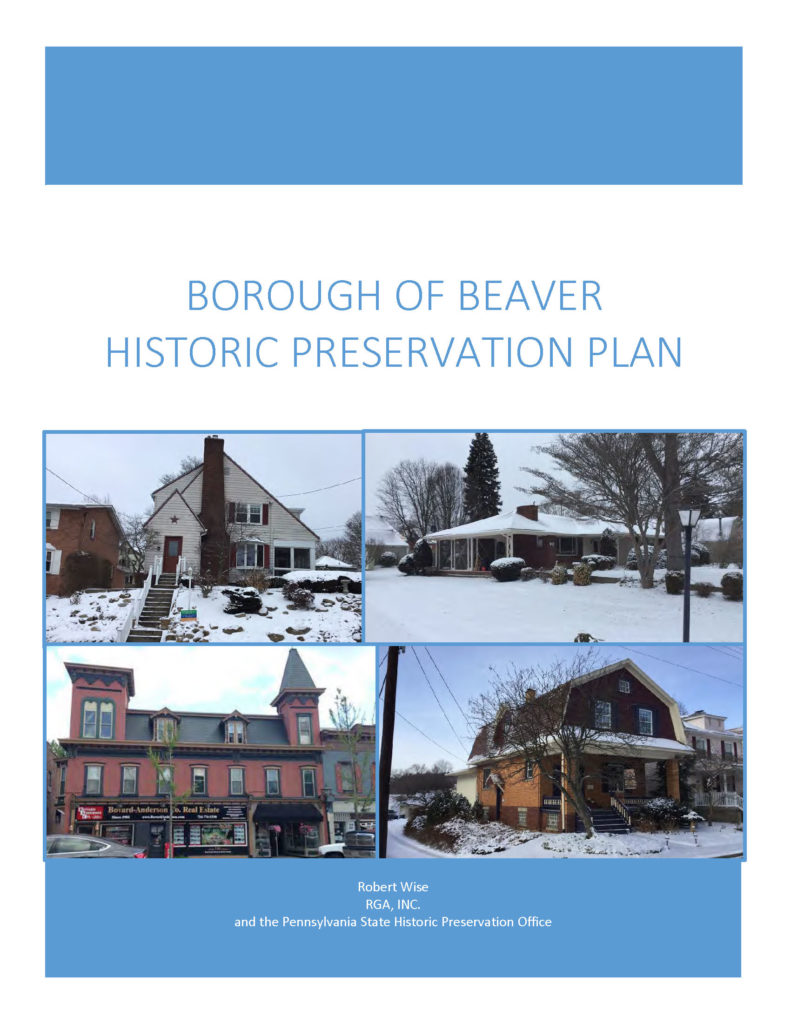
The Borough of Beaver Historic Preservation Plan articulated four straightforward goals:
Goal #1: Preserve & Protect the Historic Character of the Borough
Goal #2: Increase Public Awareness of Beaver’s History and Historic Resources
Goal #3: Maximize Economic Benefits from Beaver’s Historic Preservation Program
Goal #4: Identify Funding Needs and Sources
Each of these goals is followed by a series of objectives and action steps. For example:
Goal #1, Objective 1 of the Plan is to “Develop a community-wide preservation design ethic.” Objective 1 includes the Action Step:
- Ensure the Design Guidelines are broadly distributed and fully promoted in multiple formats.
Goal #1, Objective 2 is “Amend the Beaver Historic District Ordinance.” Objective 2 includes the Action Step:
- Add a provision to require a Certificate of Appropriateness (COA) for the construction of new buildings, structures or additions.
Goal #2 of the preservation plan is: “Increase the Public Awareness of Beaver’s History and Historical Resources.” Objective 1 of Goal #2 is “Establish an ongoing lecture/workshop program.” and includes the action step:
- The Borough (HARB) and other organizations in the community and region may wish to help sponsor additional lectures/workshops pertinent to preservation issues in Beaver.
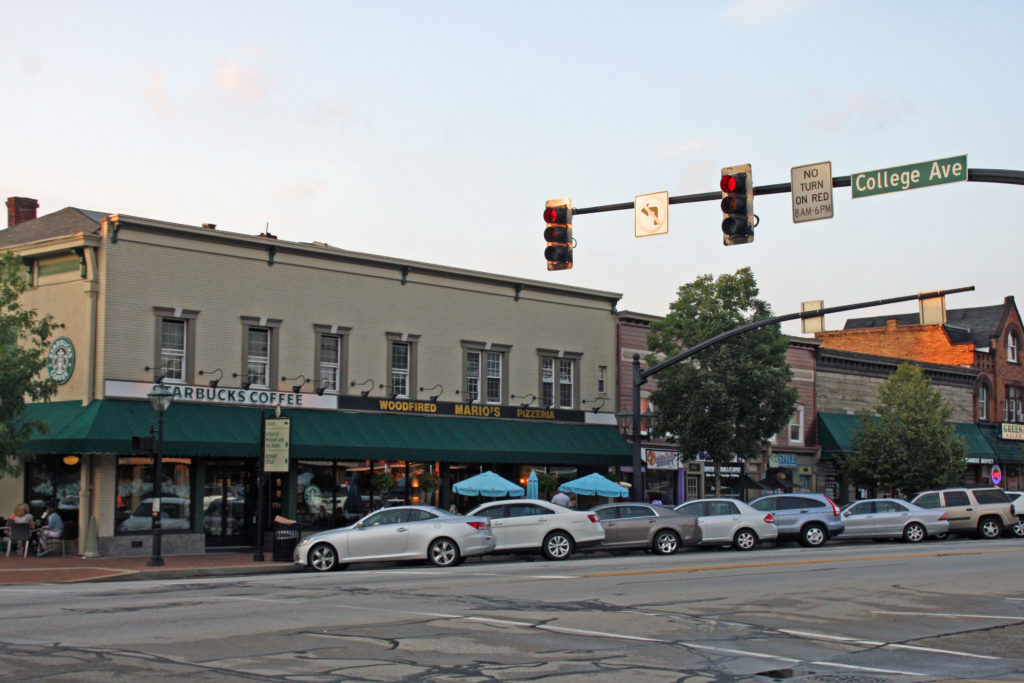
Businesses near 3rd Street and College Ave, Beaver Borough. Photo by Clio Consulting, 2019. 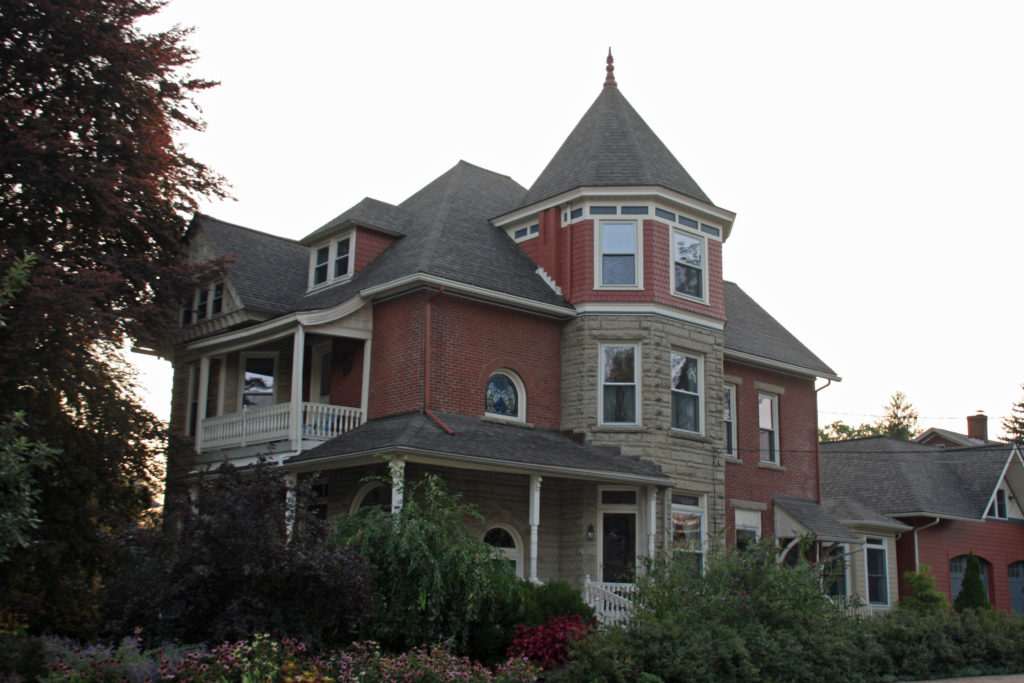
Home at River Road and Dravo Street, Beaver Borough. Photo by Clio Consulting, 2019.
As is hopefully clear in just these examples, the Beaver Historic Preservation Plan spells out actions that will help imbue an historic preservation ethic broadly through the community and, perhaps most importantly, will require dialogue, cooperation and coordination amongst preservation advocates, the public and elected officials. The burden of implementing the plan is not placed entirely on the public OR private sector, and actions to implement the plan are straightforward and practical.
In September 2021, Beaver Borough Council adopted the Beaver Historic Preservation Plan. The plan now officially outlines Borough policy as it pertains to preservation issues.
The Plan is bold yet practical. It defines the current state of preservation in Beaver and provides a vision for future activities. Many of the objectives are, as they should be, aspirational. As stated by Beaver HARB Chair extraordinaire Bob Rice:
Historic preservation tries to negotiate a precarious dilemma; people generally want things to remain the same… but also get better. With (PA SHPO) assistance, Beaver now has a comprehensive historic preservation planning process helping our civic leaders reach reasoned, thoughtful decisions regarding our historic district.
And finally, like any plan, the success of the Beaver Borough Historic Preservation Plan’s is dependent upon the continued hard work and vision of the people of the community. I think that success is in very good hands.
Comment Policy
PHMC welcomes and encourages topic-related comments on this blog. PHMC reserves the right to remove comments that in PHMC’s discretion do not follow participation guidelines.
Commenters and Comments shall be related to the blog post topic and respectful of others who use this site.
Commenters and Comments shall not: use language that is offensive, inflammatory or provocative (this includes, but is not limited to, using profanity, obscene, or vulgar comments); disparage other commenters or people; condone illegal activity; identify the location of known or suspected archeological sites; post personal information in comments such as addresses, phone numbers, e-mail addresses or other contact details, which may relate to you or other individuals; impersonate or falsely claim to represent a person or an organization; make any commercial endorsement or promotion of any product, service or publication.
If you would like to comment on other topics not related to this blog post but related to PHMC, please fill out the PHMC Contact Us Form.

Thank you all who were onvolved in this.
When visiting my daughter in neighboring New Brighton, Beaver County, I often find an excuse to cross the river to Beaver. There I may visit the cemetery, drive the streets of the historic district to photograph houses, or visit a shop or eatery on the main street.
If there’s time, I like to visit the Beaver Area Heritage Museum and Log House. Most recently I photographed the Matthew Quay House and its historical marker near the park. I also took photos of Ft. McIntosh and “the oldest house in Beaver.”
The people who live in Beaver must have a real vision for preservation (and the means to carry it out). My wish is for many other river towns, like New Brighton, to achieve the same results as Beaver. Thanks for your article!